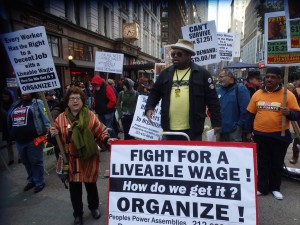Share
Follow Us
Businesses have to be keen on this new development in the financial stratosphere when you’re thinking about it, for plenty of reasons. Aside from the fact that the transition to credit card chip technology will incorporate a nationwide spread of new card-reading machines (more investment for businesses, unfortunately), there’s one other subject companies everywhere would love to learn more about: identity theft.
Will This New Credit Card Chip Technology Protect More?
Good question. This doesn’t just revolve around the consumer, but the business. Ever lend your business credit card to the intern? Not a smart move…. You can imagine just how important it is to ensure that credit card fraud never steps foot into your business, and the concept of someone stealing somebody’s information — either customer, client, or business — is earth-shattering at best.
However, the computer chip raises a beautiful question. Hackers don’t care. A chip can be hacked into.  But everyone’s saying that this new credit card chip technology’s going to change the landscape as far as credit card fraud and ID theft is concerned (it’s already happening a ton overseas where EMV’s been changing the way people spend money).
But everyone’s saying that this new credit card chip technology’s going to change the landscape as far as credit card fraud and ID theft is concerned (it’s already happening a ton overseas where EMV’s been changing the way people spend money).
Here’s why credit card chip technology will make things better — the main problem with the magnetic strip credit card is the fact that the strip holds all the data and it never changes. That means if anyone ever gets a hold of your one little strip (they don’t even need to steal the card) and copies it (that’s really all they need to do), you can go about your life still having your card (no one stole it!) while some ID thief runs around with a copycat card, spending all your money.
That magnetic strip is a prime target for ID theft.
What the computer chip-enabled card does, however, is allow the user to swipe it, have the machine read it; and the chip itself develops a unique ‘transaction code’ that can never be used again. It, therefore, means, you can buy 15 separate candy bars, the card will read it 15 separate times, and each time will be virtually unique from every other time.
Not one thief would be able to steal your information. Each transaction is encoded through the chip and never gets stored anywhere. It’s processed and then dies a lovely death in cyberspace, basically. Therefore, your information can’t ever be pulled from the card.
Of Course, These ID Thieves Are Resourceful!
The hope is the new credit card chip technology will change the way credit card fraud happens. As in never. But the problem with ID theft is there’s always a way. It’s like that bad penny always turning up. The good news is that this new development will certainly make it easier for Ultimate Identity Protection and other partners to do what they do best. Protect your identity.
Visit our Google+ page. Sign up today! And be on the lookout for your new computer chip-enabled credit card.
Share
Follow Us
The post How the New Credit Card Chip Technology Will Support ID Theft appeared first on Ultimate Identity Protection Services.
The post How the New Credit Card Chip Technology Will Support ID Theft appeared first on Independent Credit Solutions.
Share
Follow Us!

 But everyone’s saying that this new credit card chip technology’s going to change the landscape as far as credit card fraud and ID theft is concerned (it’s already happening a ton overseas where EMV’s been changing the way people spend money).
But everyone’s saying that this new credit card chip technology’s going to change the landscape as far as credit card fraud and ID theft is concerned (it’s already happening a ton overseas where EMV’s been changing the way people spend money).

